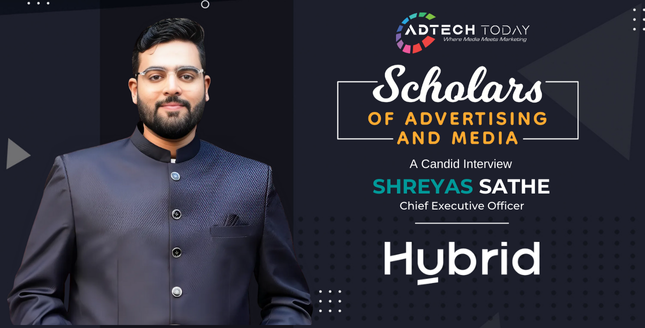

Shreyas Sathe, CEO & Co-founder of Hybrid INSEA, transformed a 6×6 ft room startup into a multi-market AdTech company spanning India and Southeast Asia. In this interview, he reflects on the leadership lesson of transferring belief, the cultural nuances global brands often overlook in Southeast Asia, and how Hybrid balances privacy-first advertising with contextual intelligence. With nearly a decade in digital marketing, Sathe champions people-first leadership and the power of emotion in driving digital success.
You started Hybrid India from a 6×6 ft room and turned it into a multi-market AdTech company. Beyond the origin story, what leadership muscle did you build over time that you didn’t know you needed at the start?
I had thought leadership was about strategy and numbers. But I learned it’s really about belief. When you’re building something new, your biggest job is to make people believe in a vision they can’t yet see. I had to develop the ability to transfer conviction to get others excited, aligned, and emotionally invested. That meant being real, listening deeply, staying grounded, and creating a space where people feel safe to challenge and build together. Leadership, I realised, is about managing energy more than anything else.
VOX, the contextual advertising solution, transforms static editorial images into high-performance ad spaces using AI. What kind of data or signals do you rely on to ensure contextual relevance without compromising user experience?
We rely on a combination of semantic signals, visual context, headline sentiment, image content, meta tags, and even article tone. But everything is privacy-safe. No cookies, no use of personal data. Our goal is to match intent with moment, not follow users around. If the ad feels natural in the content flow, we know we’ve done it right. That’s where tech meets respect for the user.
You work across India, Indonesia, Singapore, and more. In terms of campaign effectiveness, what’s one under-appreciated insight about Southeast Asian digital audiences that global brands often overlook?
The “APAC” is not a single market. Indonesia runs on emotion, India thrives on local pride and multilingual storytelling, and Singapore prefers logic and credibility. You can’t copy-paste a campaign and expect it to work. We’ve seen a 2x to 3x lift just by tweaking visuals or rewriting CTAs for cultural fit. Global brands often come with playbooks, but in this region, intuition and localisation win.
In a privacy-first world, how are you rethinking measurement and attribution, especially as we shift from deterministic tracking to probabilistic and contextual models?
We’ve moved from tracking individuals to understanding patterns. Contextual and probabilistic models let us predict intent without invading privacy. We also use media mix modeling and clean rooms where needed. It’s less about following users and more about finding the right signals at the right moment. Attribution won’t be pixel-perfect anymore, and that’s okay. We’re focused on what moves the needle, not what checks a box.
You’re vocal about being “people-first” in a tech-led business. How do you practically embed this into team structures, client relationships, or even product decisions?
We build with trust, not titles. At Hybrid, even interns can speak up in leadership meetings. For clients, we never overpromise. We aim to be the partner that tells them what they need to hear, not just what they want to. In the product too, we ask one thing: will this feature serve people, or is it just tech for the sake of it? People-first isn’t a value we frame on the wall. It shows up in how we behave when no one’s watching.
As someone who straddles technology and storytelling, what excites you more these days, engineering the next innovation or decoding what truly moves consumers in a noisy digital world?
Honestly, it’s decoding the human side. Tech is evolving fast, but what really cuts through is emotion. I’m curious about figuring out why people pause, why they click, and what makes them care. Once you get that, you can build tech around it. Great stories scale better with good tech, but it always starts with truth. That’s what excites me.